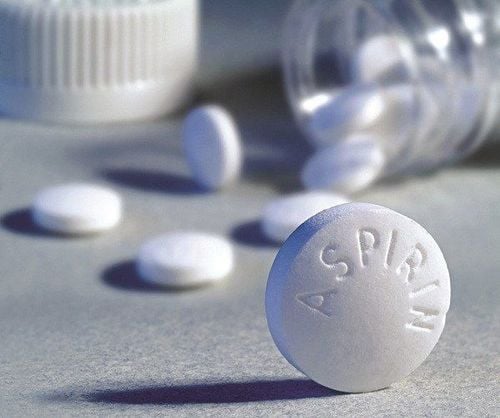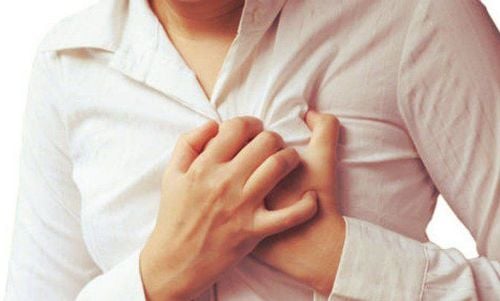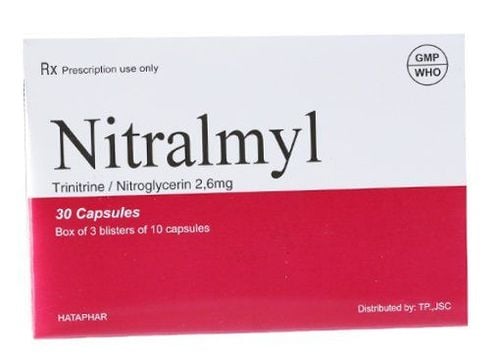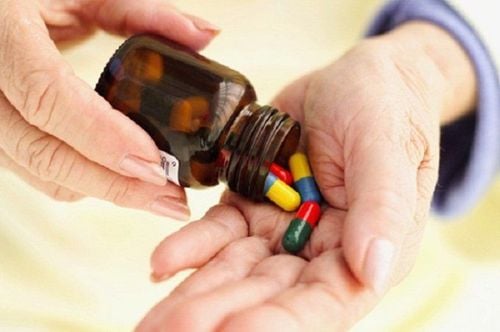This is an automatically translated article.
Posted by Master, Doctor Ho Thi Xuan Nga - Cardiovascular Center - Vinmec Central Park International General Hospital
Heart valve stenosis, typically low posterior mitral stenosis, is one of the common cardiovascular diseases in developed countries as well as in Vietnam. If this disease is not treated in time and with the right regimen, it can cause many life-threatening complications.
1. What is mitral stenosis?
Mitral valve stenosis is a narrowing or regurgitation of the mitral valve, aortic valve caused by acute rheumatic bacteria moving in the blood, reaching the heart valve area and "eroding" the 2 valve leaflets, causing the heart valve to contract. , deformation and loss of function.
Even if you have a severe sore throat, which is caused by the same bacteria as acute rheumatism, you can easily develop rheumatic mitral stenosis, not always having joint pain.

Hẹp van tim hai lá do vi trùng thấp khớp cấp gây ra
2. How does low posterior mitral valve disease manifest?
At the beginning of rheumatic mitral stenosis, the heart valves have not been significantly damaged, so patients often have no symptoms until a few years later. Often the patient will be tired, short of breath when exertion, feeling short of breath when working. In general, symptoms are nonspecific and can easily be confused with numerous other cardiovascular or debilitating diseases.
When the heart valve is narrowed to a moderate or severe degree, the patient will have more obvious symptoms of heart failure, often have trouble breathing at night, dry cough and at these times have to lie down to sleep. . Sometimes in the late stages, the patient has distended neck veins or even mild leg edema in the afternoon.
3. How to treat low posterior mitral stenosis?
First of all, the patient needs to be clinically examined, electrocardiogram, echocardiogram and X-ray taken to determine the disease and how the disease has progressed before medical or surgical treatment can be performed.
In mild or moderate stenosis, it is only necessary to take medicine for heart failure, a diet with less salt, a reasonable work and rest regime, and follow-up with echocardiography every 6 months.
When mitral stenosis, with or without atrial fibrillation, the patient needs surgery to replace the heart valve or repair the valve. Depending on the degree of damage and requirements, occupation, and living conditions of the patient, the doctor will advise the patient to choose the most appropriate type of heart valve for each person.

Bệnh nhân có thể tự điều trị bằng thuốc khi bệnh ở mức độ nhẹ
4. Do you need to take medicine after mitral valve replacement?
After valve replacement to treat low back mitral stenosis, whether you need to take medicine anymore is a common question asked by all patients. In this regard, specialists say that after a biological or mechanical mitral valve replacement, the patient must continue to take medication and monitor.
The artificial mitral valve introduced into the body is a foreign object, so the patient needs to take anticoagulants, which are drugs that help thin the blood, make the two valves not "stuck", operate easily, also It's like we regularly oil our door hinges.
The second drug to take is heart failure medication, antiarrhythmic drugs if unfortunately the patient has...
5. What to do after mitral valve replacement?
Mitral valve replacement does not limit the patient's normal activities in daily life. However, the patient needs to work, rest and exercise according to the doctor's advice. When taking anticoagulants, there are some "incompatible" foods, so you should not eat much because they easily contribute to bleeding. Patients should strictly follow the diet as advised by the doctor.

Người bệnh cần tuân thủ chế độ dinh dưỡng mà bác sĩ đưa ra
6. When should the mitral valve be rechecked?
While taking anticoagulation, the patient will have symptoms of natural root bleeding, nosebleeds or gastrointestinal bleeding, hemiplegia... must quickly go to the nearest hospital with a heart specialist. circuit to declare their status, without delay!
When suddenly coughing up pink foam, fatigue, shortness of breath...after mechanical mitral valve replacement, you must quickly go to a cardiologist or a hospital with cardiology to have an echocardiogram to check if Is the valve stuck?
Anticoagulants are a double-edged sword, so the patient must follow the doctor's instructions closely, do not make up after forgetting, do not skip a dose, do not arbitrarily increase or decrease the dose depending on their health or fatigue. feeling!
Need to check by examination and echocardiography, periodic blood test every 3-6 months/after that.
To protect cardiovascular health in general and detect early signs of myocardial infarction and stroke, customers can register for an examination at the Cardiovascular Center - Vinmec International General Hospital, which is one of the leading centers in the country for examination, diagnosis, screening and treatment of cardiovascular diseases. With the convergence of a team of experienced, reputable experts in the field of surgery, internal medicine, interventional cardiac catheterization and the application of advanced techniques in the diagnosis and treatment of diseases. Cardiovascular management, along with a system of modern equipment, on par with the most prestigious hospitals in the world such as: 3 Tesla MRI machine (Siemens), 640 CT machine (Toshiba), other equipment Advanced endoscope EVIS EXERA III (Olympus Japan), Avace high-end anesthesia system, Hybrid operating room according to international standards... The Cardiovascular Center at Vinmec International General Hospital has achieved many successes. work and gain the trust of a large number of patients.
Please dial HOTLINE for more information or register for an appointment HERE. Download MyVinmec app to make appointments faster and to manage your bookings easily.













